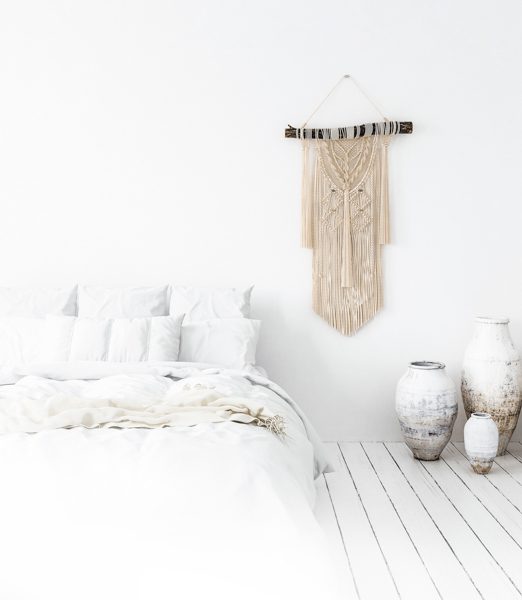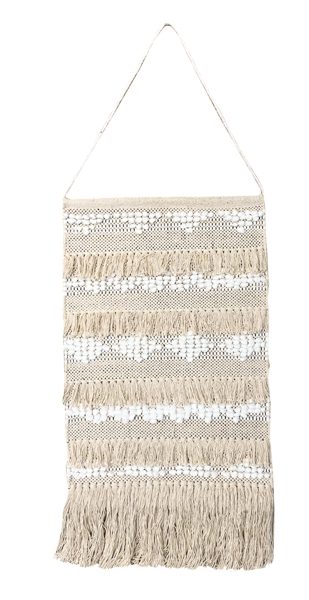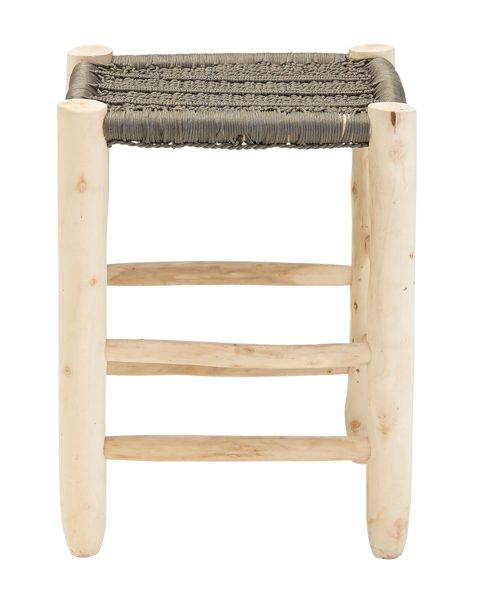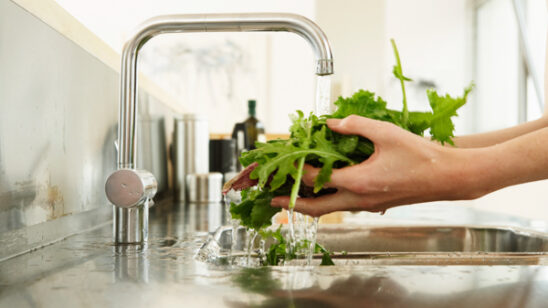
Getting Homewares All Tied Up
Add an arty, earthly, organic vibe to a room with fibre art. This is far from something new – but then that’s the beauty of it.

Originating as a craft in the ’60s, and common on walls by the ’70s, the fashion faded until recently. Now handmade, woven art style is recreating the fabric of our homes. With interior design focus toward natural woods and stoneware, this decor trend is a natural match.
A hands-on craft involving manually knotting, twining, plaiting, coiling, pleating, lashing and interlacing, materials range from tough jute, rattan and rope to finer wool, cotton or silk. Although traditionally reserved for natural materials, acrylics also feature. Art can be hung by invisible fishing tackle, string and wooden rods, or framed on canvas, or boxed for structure.

Fibre art is everywhere, especially in the bedroom. A macramé woven wall hanging in lieu of a headboard is pure cosiness. There’s a softening natural effect of fibre art against a stark gibbed wall. Beading or fabric is sometimes woven into the mix. Incorporating seashells such as paua and using flax, is a Kiwi version of a dream-catcher!
Plants have now snuck back inside as oxygen-producing adornments and they’re now seen dangling from the rafters in creative macramé hangers. The textiles in fibre art can be beautiful, with raw, or natural dyes creating interesting aesthetics. A colourful ethnic tapestry above the mantle in the lounge is a refreshing change from framed art and a woven rug on the bathroom floor is a step up from the common acrylic bath math.




